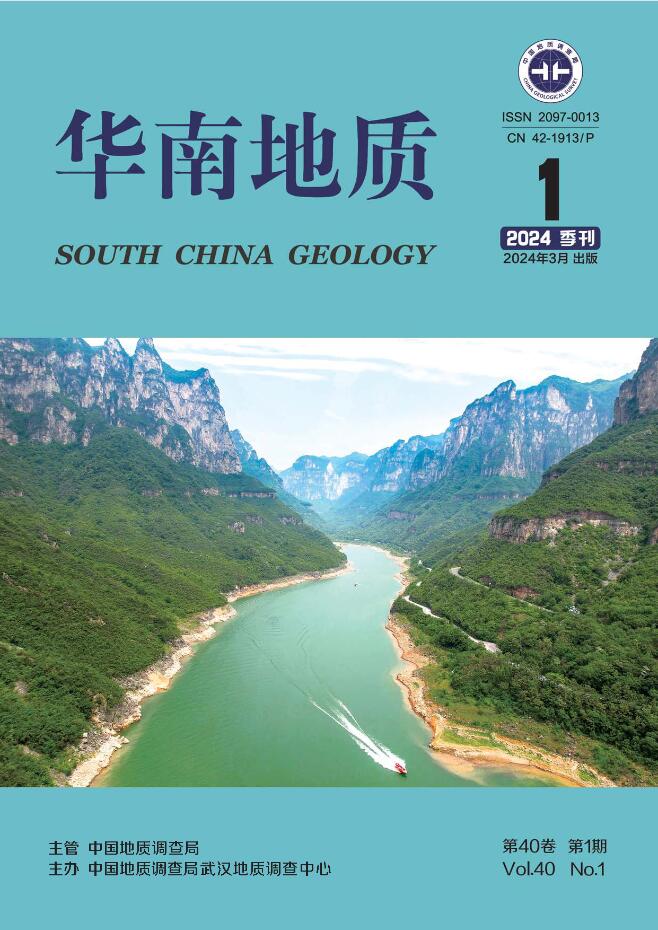| [1] |
卞跃跃,赵丹.2018.四川康定地热田地下热水成因研究[J].地球学报,39(4):491-497.
Google Scholar
|
| [2] |
国家市场监督管理总局,中国国家标准化管理委员会.2022.生活饮用水卫生标准:GB5749-2022[S].北京:中国标准出版社.
Google Scholar
|
| [3] |
国家环境保护局.1989.渔业水质标准:GB11607-1989[S].北京:中国标准出版社.
Google Scholar
|
| [4] |
何欣,马悦.2019.华北板块奥陶系碳酸盐岩热储的水化学特征及其成因机制[J].安全与环境工程,26(3):9-15.
Google Scholar
|
| [5] |
何雨江,丁祥.2020.基于参数辨识的典型区地热资源量研究——以银川平原西部斜坡区为例[J].地质学报,94(7):2131-2138.
Google Scholar
|
| [6] |
胡志华,高洪雷,万汉平,张松,郝伟林,吴儒杰.2022.西藏羊八井地热田水热蚀变的时空演化特征[J].地质论评,68(1):359-374.
Google Scholar
|
| [7] |
黄豪擎,袁兴成,彭清华,郭游,薛仲凯,旦增,李健,刘振峰,巴桑次仁,孙飞,袁胜.2023.喜马拉雅山南地区地热水和钙华地球化学特征与成因机制[J].沉积与特提斯地质,43(2):340-356.
Google Scholar
|
| [8] |
李金玺,孙东,李智武,曹楠,童馗,廖俊,张正鹏,董建兴,章旭.2023.四川盆地水热型地热资源构造成因模式[J].地质科学,58(2):438-460.
Google Scholar
|
| [9] |
刘润川,任战利,叶汉青,任文波,王琨,淮银超,祁凯.2021.地热资源潜力评价——以鄂尔多斯盆地部分地级市和重点层位为例[J].地质通报,40(4):565-576.
Google Scholar
|
| [10] |
刘敏.2020.郴州市热温泉资源特征及其开发利用布局研究[J].西部探矿工程,32(11):188-191.
Google Scholar
|
| [11] |
刘凯,王珊珊,孙颖,崔文君,朱德莉.2017.北京地区地热资源特征与区划研究[J].中国地质,44(6):1128-1139.
Google Scholar
|
| [12] |
廖海吉,蓝俊康,洪淑娜,闫志为,黄希明.2013.汤水寨温泉带状热储特征及其热储量评价[J].桂林理工大学学报,33(3):449-453.
Google Scholar
|
| [13] |
牛兆轩,牛雪,张林友,张成龙,陈东方.2022.共和盆地恰卜恰地区新近系地下热水化学特征[J].科学技术与工程,22(21):9025-9033.
Google Scholar
|
| [14] |
屈丽丽,徐世光,杨秀梅,禚传塬.2011.怒江跃进桥温泉水化学特征及成因分析[J]. 科学技术与工程,11(20):4723-4729.
Google Scholar
|
| [15] |
史杰,汪美华,马小军,文章,朱栗佟.2022.新疆塔什库尔干县曲曼地热田地下热水同位素研究[J].地球学报,43(5):645-653.
Google Scholar
|
| [16] |
孙杨艳,刘声凯,景营利.2020.郴州地热田地热温标的选取和热储温度估算[J].资源信息与工程,35(1):36-39.
Google Scholar
|
| [17] |
生态环境部,国家市场监督管理总局.2021.农田灌溉水质标准:GB5084-2021[S].北京:中国标准出版社.
Google Scholar
|
| [18] |
王大纯,张人权,史毅虹,许绍倬.1986.水文地质学基础[M].北京:地质出版社.
Google Scholar
|
| [19] |
尹恒,吴勇,高东东,古广华.2012.德阳市城市规划区地下水化学特征分析[J].地下水,34(1):30-35.
Google Scholar
|
| [20] |
尹政,柳永刚,张旭儒,李玉山,冯嘉兴.2023.张掖盆地地热资源赋存特征及成因分析[J].水文地质工程地质,50(1):168-178.
Google Scholar
|
| [21] |
赵璐,邬立,罗湘赣.2010.由地球化学温标推算贵阳市乌当区地热田热储温度[J].工程勘察,(S1):832-836.
Google Scholar
|
| [22] |
朱天林.2006.郴州市许家洞地下热水[J].工程勘察,207(10):35-37.
Google Scholar
|
| [23] |
张垚垚,刘凯,童珏,何庆成,贺晓龙,贾伍慧,张浩然,王书训.2024.江西吉安钱山地区地热资源特征及热源机制[J].地球学报,45(1):39-52.
Google Scholar
|
| [24] |
赵振,秦光雄,罗银飞,晁嘉豪,耿松鹤,张亮.2021.西宁盆地地热水特征及回灌结垢风险[J].水文地质工程地质,48(5):193-204.
Google Scholar
|
| [25] |
中华人民共和国国家卫生健康委员会,国家市场监督管理总局.2018. 食品安全国家标准饮用天然矿泉水:GB8537-2018[S].北京:中国标准出版社.
Google Scholar
|
| [26] |
中华人民共和国国家卫生健康委员会,国家市场监督管理总局.2022.食品安全国家标准饮用天然矿泉水检验方法:GB8538-2022[S].北京:中国标准出版社.
Google Scholar
|
| [27] |
中华人民共和国国家质量监督检验检疫总局,中国国家标准化管理委员会.2010.地热资源地质勘查规范:GB/T11615-2010[S].北京:中国标准出版社.
Google Scholar
|
| [28] |
中华人民共和国国家质量监督检验检疫总局,中国国家标准化管理委员会,2016.天然矿泉水资源地质勘查规范:GB/T13727-2016[S].北京:中国标准出版社.
Google Scholar
|
| [29] |
Guo Q, Pang Z H, Wang Y C, Tian J. 2017. Fluid geochemistry and geothermometry applications of the Kangding high-temperature geothermal system in eastern Himalayas[J]. Applied Geochemistry, 81: 63-75.
Google Scholar
|
| [30] |
Karimi S, Mohammadi Z, Samani N. 2017. Geothermometry and circulation depth of groundwater in Semnan thermal springs, Northern Iran[J]. Environmental Earth Sciences, 76(19): 1-24.
Google Scholar
|
| [31] |
Li X, Huang X, Liao X, Zhang Y H. 2020. Hydrogeochemical Characteristics and Conceptual Model of the Geothermal Waters in the Xianshuihe Fault Zone, Southwestern China[J]. International Journal of Environmental Research and Public Health, 17(2): 500-514 .
Google Scholar
|
| [32] |
Liu F, Wang G L, Zhang W, Yue C, Tao L B. 2020. Using TOUGH2 numerical simulation to analyse the geothermal formation in Guide basin, China[J]. Journal of Groundwater Science and Engineering, 8(4): 328-337.
Google Scholar
|






 DownLoad:
DownLoad: